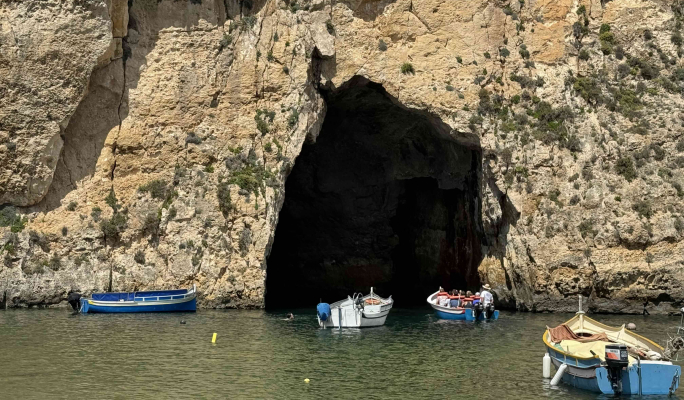Copyright maltatoday

Gozo’s unique habitats face ongoing pressures. The alien mosquito fish is disrupting the balance in Dwejra’s Inland Sea. Feral cats prey on rare insects at L-Inħawi tar-Ramla, while rats threaten bird colonies on Fungus Rock. A globally rare flower near Xlendi Tower is also at risk from trampling. These examples highlight the delicate balance of the island’s ecosystems. Updated management plans now address these pressures across six terrestrial Natura 2000 sites in Gozo: L-Inħawi ta' Għajn Barrani, L-Inħawi tar-Ramla, L-Inħawi tad-Dwejra u tal-Qawra (including Ħaġret il-Ġeneral), L-Inħawi tax-Xlendi u tal-Wied tal-Kantra, Il-Qortin tal-Magun u l-Qortin il-Kbir, and L-Inħawi ta' Ta' Ċenċ. These sites support a range of protected species that require careful management. ERA is presently receiving feedback from the public on these plans. Predation and wildlife Predation is a major factor affecting the breeding success of protected wildlife, particularly seabirds and rare invertebrates. On the cliffs of Dwejra and Ta' Ċenċ, the Scopoli's Shearwater, Yelkouan Shearwater, and European Storm-petrel face ongoing threats from rodents and feral cats. Conservation efforts at Dwejra include monitoring and controlling rat populations, including on Fungus Rock. Similar measures are applied at Xlendi and Ta' Ċenċ. Inland, the fragile sand dune habitats at L-Inħawi tar-Ramla are particularly vulnerable. Two protected endemic invertebrates—the Giant Cricket and the ground beetle—face predation risks. To support the Giant Cricket, conservation measures focus on reducing feral cat predation through neutering and relocation programs at Ramla and Ta’ Ċenċ. Bats in need of protection The Lesser Horseshoe Bat has an established presence at L-Inħawi tax-Xlendi u tal-Wied tal-Kantra, where nine individuals have been recorded. Efforts focus on safeguarding their roosting sites in tunnels and mitigating threats from noise and light pollution generated by nearby residential or commercial activities. The Maghreb/Algerian Myotis is far more elusive, with only one individual observed at Il-Qortin tal-Magun. The primary objective for this species is to conduct studies to close knowledge gaps regarding its population size, distribution, and roosts. These operational measures will precede the development of long-term conservation strategies. Cars, tourists, and trampling Recreational activity also pressures Gozo’s sensitive habitats. Uncontrolled vehicle access and trampling can damage cliffs and rocky areas, affecting vegetated sea cliffs, calcareous rocky slopes, and clifftop shrubs at Dwejra, Xlendi, and Ta' Ċenċ. Physical barriers and signage have been introduced across these sites to guide access and support habitat recovery. Trampling is a particular concern at Ramla’s sand dunes. Conservation measures include retaining cordons, installing clear signage, and managing pedestrian access to allow damaged areas to recover. Invasive plants Invasive plants are a widespread threat across Gozo’s Natura 2000 sites, displacing fragile endemic flora. At Ramla, sand dune ecosystems are challenged by giant grass and common grapevine, requiring active control. In the Xlendi Valley system, riparian areas are overgrown with giant reed, necessitating ongoing removal to restore ecological balance. On cliffs and rocky slopes at Dwejra u tal-Qawra and Ta’ Ċenċ, alien species such as Agave, Wattle, and ice plant affect endemic phryganas and other rocky habitats. Conservation objectives across all sites focus on removing or controlling these invasive species to minimize their impact and allow native flora to regenerate. Conservation at landmark locations Certain sites demand heightened attention due to the intersection of development pressures and invasive species with vulnerable habitats. At Dwejra Inland Sea, a habitat characterised by low to moderate nutrient waters with high mineral content, alien fish species such as mosquito fish (Gambusia) and domestic waterfowl pose major threats. Measures include removing these species from both the waterbody and surrounding areas to restore the habitat. Near Xlendi Tower, the globally rare plant Linaria pseudolaxiflora, with only 335 individuals recorded, is highly sensitive to human disturbance. The management plan recommends that any restoration or maintenance work on the tower include preventive measures to minimise impact on the species.



